The logical way to tell a story is to begin (as the King said to Alice) at the beginning, and go on till you come to the end. Any story makes less sense when learned in bits and pieces. If you were to tell your five-year-old the story of “Hansel and Gretel,” beginning with the house made of candy and cookies (because that’s likely to be the most interesting part of the story to the five-year-old), then backing up and telling about the woodchopper’s unfortunate second marriage, then skipping to the witch’s demise, the story isn’t going to make a coherent whole in the child’s mind.
History is no different. Yet it’s too often taught unsystematically, as a series of unrelated bits and pieces: American history this year, ancient history the next, eighteenth-century France the year after that. By the time you graduated high school or college, you’d studied King Tut, the Trojan War, the Bronze Age, the rise of the city-state and the Exodus. Chances are you studied these subjects in different years, out of different textbooks. You probably can’t put them into chronological order in your own mind.
Furthermore, you probably spent twice as much time on American history as you did on the history of the rest of the world combined. American history is important for Americans, but this myopic division of the curriculum does the Founding Fathers a disservice. Children who plunge into the study of the American Revolution with no knowledge of the classical models used by Jefferson and Washington and their colleagues can achieve only a partial understanding of American government and ideals. And American history ought to be kept in perspective; the history curriculum covers seventy centuries, America occupies two of those centuries.
A common assumption made by history programs seems to be that children can’t comprehend (or be interested in) people and events distant from their own experience. So the first-grade history class is renamed Social Studies and begins with what what the child knows — first herself and her family, then her community, her state, her country, and only then the rest of the world.
This intensely self-focused pattern of study encourages the student of history to relate everything she studies to herself, to measure the cultures and customs of other peoples by her own experience. If you begin your child with herself and only then move outwards, you can easily give her the impression that she is the center of the universe, and that history which doesn’t directly coincide with her particular wants and preoccupations is unnecessary.
The goal of the classical curriculum is entirely different. The student learns the proper place of her community, her state, and her country by seeing the broad sweep of history from its beginning and then fitting her own time and place into the pattern.
How do you study history from the beginning? We suggest dividing history into the following periods:
- Ancients, BC 5000-400 AD
- Medieval/Early Renaissance, 400-1600
- Late Renaissance/Early Modern, 1600-1850
- Modern Times, 1850-Present
Spend one year on each period, starting with the Ancients and working your way up to Modern Times. You can begin this cycle in any grade. Spend sixth grade on the Ancients, seventh on the Medievals, eighth on the Late Renaissance period, and ninth on Modern Times. Or start in first grade and finish in fourth grade. Whenever you finish, start over again and cover the material in greater depth.
Don’t feel that you need a “history text.” Instead, use a chronological survey of history as your base text and collect resources from your library and from home school catalogs. For elementary students, our favorite history survey is The Usborne Book of World History. Middle-grade students can use The Kingfisher Illustrated History of the World, while high schoolers should use The Timetables of History.
These texts will introduce you to countries, civilizations, and personalities. Now go to the library (and scan home education catalogs) for supporting materials. Write book reports and compositions, do projects, color maps, and recreate battles with toy soldiers. Middle-grade students can begin to read simplified sources such as retellings of the Iliad and the Odyssey, and original documents such as the Declaration of Independence and the Constitution. Older students can read more difficult original sources — Aristotle’s Ethics, The Federalist Papers.
The library is packed with colorful, informative and fascinating books on everything from ancient African civilization to the beginnings of the Atomic Age. So don’t tie yourself to a text. Tell the story of history to your child — from beginning to end.
Recommended Products
-

Juneteenth Booklist & Activities
0 out of 5$0.00 Add to cart -


Fifth Grade Math with Confidence Instructor Guide
0 out of 5Starting at:$36.95Original price was: $36.95.$27.71Current price is: $27.71. Select options -
Sale!

Hansel & Gretel and Other Stories: Downloadable MP3
0 out of 5$12.95Original price was: $12.95.$9.71Current price is: $9.71. Add to cart -
Sale!

Dorothy and the Wizard in Oz: Downloadable MP3
0 out of 5$25.95Original price was: $25.95.$19.46Current price is: $19.46. Add to cart -
 Sale!
Sale!

Fifth Grade Math with Confidence Student Workbook B
0 out of 5$16.46 – $21.56 Select options This product has multiple variants. The options may be chosen on the product page -
 Sale!
Sale!

Fifth Grade Math with Confidence Student Workbook A
0 out of 5$16.46 – $21.56 Select options This product has multiple variants. The options may be chosen on the product page
ABOUT THE AUTHOR
Susan Wise Bauer
Join over 100,000 homeschooling families
For the latest offers, educational insights, products and more.
By joining you agree to our privacy policy.



















